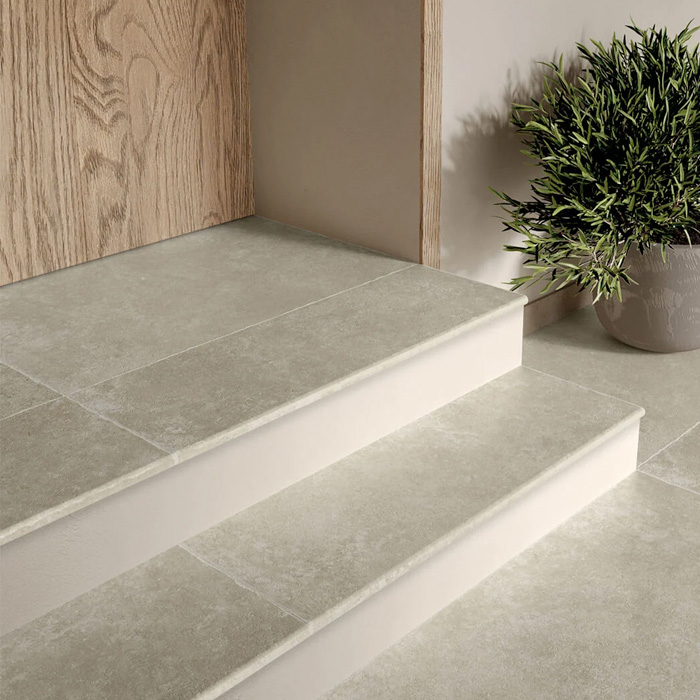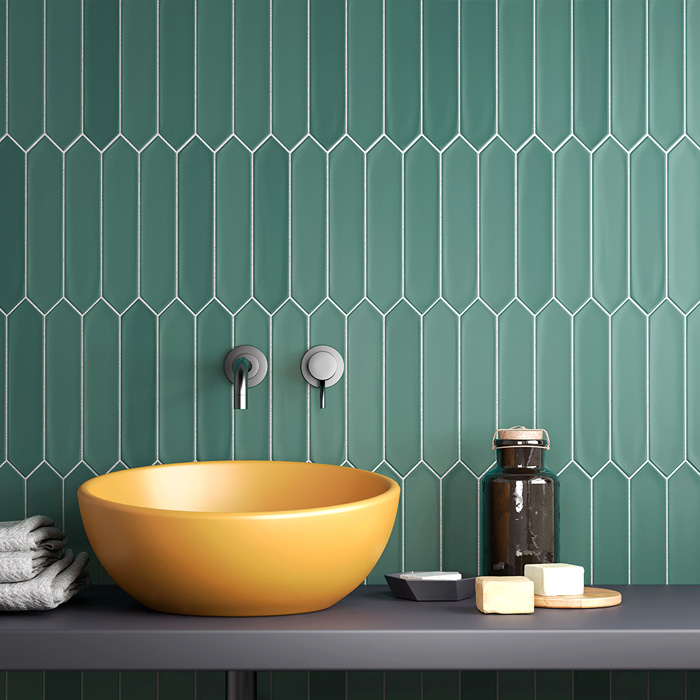Whether you’re renovating your bathroom with a stunning set of polished porcelain tiles, or laying the groundwork for your new kitchen with stylish natural stone tiles, putting in the time and steps required to get your tiling right the first time around is incredibly important.
To ensure you’re covering every essential stage, be sure to explore our installation advice centre, including our floor and wall tiling guide, that features one of the most important steps – grouting.
But why is grout so important? Keep reading to find out everything you need to know about grout, including why it’s used, the different types of grout available, and its advantages and disadvantages.
![]()
(image credit: LaMiko)
What is grouting?
Simply put, grout is a composite filling material used to support and reinforce the performance of your tiles. It’s often used to fill in cracks, fissures, and gaps that are part of any construction project, such as the gaps left between your tiles.
Grout is not, however, a direct form of adhesive. Your adhesive is what you use to bind your tiles to your floor and walls, while your grout is that line of hardened material that sits between them once laid.
What is grout used for?
Grout is used as a reinforcement agent for your tiles, as well as being an essential component in protecting and finishing your surface with a clean edging.
It’s also a key material in securing your tiles, providing a protective barrier against loose debris or moisture, which may damage the adhesive if able to get between or underneath the tiles, as well as cushioning the tiles when they expand and contract over time.
Why is grout so important when tiling?
The longevity of your tiles is significantly influenced by the use of grout. Without any grout, your tiled surface will be considerably weaker and less durable, reducing their overall lifespan. Proper grouting is essential to ensure your tiles remain securely in place and last for years.
Once laid, tiles expand and contract with room temperature fluctuations and moisture changes. This is not a problem for the tiles themselves, but should they expand directly against one another, the increased pressure can cause cracking, fracturing, or chipping, while separating them from the adhesive.
By applying grout between your tiles, it creates a strong joint and barrier that is flexible enough to accommodate the expansion of your tiles without damaging them.
In other words, grout provides your tiles with additional strength, not to mention the fact that it gives a uniform, finished look.

Montpellier Stone White Antiqued Porcelain
What are the different types of grout?
Now that you know why grout is so important for your tiles, let’s take a quick look at the different types of grouting available for you to use. This means picking from two available types – cementitious grout and epoxy grout:
What is cementitious grout?
Cementitious grout is grout made using cement and a combination of either water, sand, or both to create a polymer-modified grout that can be used indoors, outside, or even underwater.
However, if you do decide to use cementitious grout in your work, then you’ll need to pick from either sanded or unsanded grout, as both have different applications:
- Sanded Grout – made using a cement and sand combination, this coarser grout forms an incredibly strong and durable bond once dried that is resistant to both shrinking and cracking. This makes it ideal for use with floor tiles, where you tend to have larger tile joints and a higher volume of foot traffic.
- Unsanded Grout – a much stickier grout, unsanded grout is easier to work and tends to shrink as it cures, which is why it’s the preferred grouting choice for walls where precision is required.
What is epoxy grout?
Epoxy grout has quickly become a favourite of many tiling experts thanks to its versatile nature and excellent durability.
Unlike cementitious grout, epoxy grout is made using epoxy resins, aggregates, and hardeners, which combine together to create a grout that is not only incredibly tough but also highly water and stain-resistant.
As a result, this makes epoxy grout brilliant for use in both wet and high-traffic environments, such as bathrooms and kitchens, while also giving it greater resistance against breakage, chemical staining, and mould – all while containing a far more consistent colour than traditional cementitious grouts.
What are the advantages and disadvantages of grout?
Grouting is an essential step in any tiling project, so it's important to understand both the advantages and disadvantages of using grout. We’ve outlined the most crucial points to consider below:
What are the advantages of grout?
First, grout strengthens your tiles and ensures that they don’t crack or break when expanding or put under pressure. Additionally, it also protects the adhesive of your tiles by stopping moisture and debris from getting behind them.
But the advantages of grout are not just physical. For example, a good grouting job helps to provide an attractive finish to your tiling work, eliminating exposed edges and forming a seamlessly smooth finish throughout the room.
Finally, certain grout colours can help minimise the appearance of stains and dirt build-up, particularly mid to darker grout colours. Some lighter grouts, on the other hand, may make dirt more visible.
What are the disadvantages of grout?
As important as grout is for the performance for your tiles, there are some key considerations to take note of.
First and foremost, it’s recommended to seal grout to prevent staining and mould. Sealing your tiles and grout will protect them against dirt, mould and stains, to keep them in top condition.
However, if not done properly, sealing your grout and tiles can cause grout haze. Simply put, grout haze occurs when you fail to clean your tiles properly before sealing, which results in tile stains and blemishes that can’t be removed without stripping your sealant. And while removing grout haze is possible, it’s not an easy task.
On top of this, certain grouts dry faster than others, such as epoxy grouts. This means you need to be quick when grouting so that you can finish a set area and wipe your tiles clean before it fully cures.

What colour grout should you choose
When considering the available types of grouting, you’ll need to be sure that you’re chosen grout colour complements your tiles. From bold colours to subtle hues, there are plenty of grouting colour options out there for you to choose from.
It's important to decide how you want your chosen grout shade to work with the colour of your tiles. You can opt for a monochromatic look, where the grout matches the tile colour, or a dichromatic tone, where the grout contrasts with the tiles:
- Monochromatic Grout – these are blended colours that are designed to make your tiles stand out over your grout, ensuring they remain the focal point of your tiling design.
- Dichromatic Grout – dichromatic grout is all about creating a contrast with your tiles so that the pattern of the tile layout stands out, often typified by choosing a lighter or darker grout shade than your tile’s base colour.
Buy your grout from Stone Superstore
In summary, using grout with your tiles is simply a must if you want longevity and dependability from your new tiles. You can explore our recommended range of grouts, primers, sealants and more within our fixing products range.
For an unbeatable range of versatile and durable tile options, just take a look at what else we have on offer in the full Stone Superstore range! From incredibly realistic porcelain-effect tile sets to natural stone that is perfect for a traditional home, we can help make your dream home a reality. Browse through our selections today and be sure to order your free tile samples before you order so you can compare them directly within your home.

